#Terry Perkins
Explore tagged Tumblr posts
Text
Information for use in fan fiction and anything else related to The Bill. This will be added to and edited every so often and please feel free to comment if you want to add or edit anything.
Part 1
The Bill is set in the fictional Sun Hill which makes up part of the also fictional Borough Of Canley. It's roughly set around the areas of Whitechapel, Stepney, Shadwell, Spitalfields, Portoken, Limehouse and parts of Aldgate, Bishopsgate, Shoreditch and Mile End. It's also known as the Tower Hamlets area. Mike Dashwood once describes its location as 'Tower Bridge and turn right'. Maps of Sun Hill show the Isle Of Dogs area.
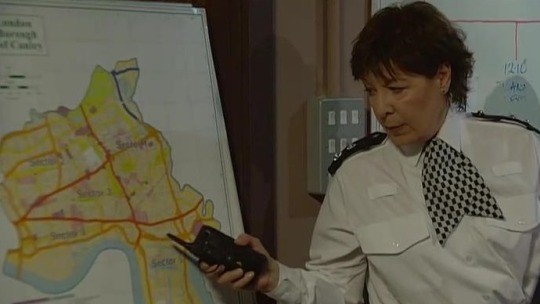

The station address is: Sun Hill Police Station, 2 Sun Hill Road, Canley, London, E1 4KM. The telephone number is 020 7511 1642.
In 1988 Sun Hill (not Canley as a whole, just Sun Hill) was described as being 6 miles long and 2 miles wide.
The caution: I am arresting you on suspicion of (OFFENCE: eg murder or sexual assault). You do not have to say anything, but it may harm your defence if you do not mention when questioned something which you later rely on in court. Anything you do say will be given in evidence.
This MUST be said, IN FULL, each time someone is arrested and officers MUST make sure that the person understands it ALL.
Vehicle Call Signs:
Area Car (Sierra 1, Sierra 1-2, Sierra 1-7, Sierra Oscar 21 and Sierra Oscar 22)
Van (Sierra 2)
CID Cars (Sierra Oscar 5 to 9) (Sierra-1-1 has lights/siren hidden like below but they have a magnetic light to stick on top like below)
TSG (Sierra Oscar 1-3)
IRV (Sierra Oscar 2-3)
Panda (Sierra Oscar 8-4, 8-5, 8-6, 8-7)
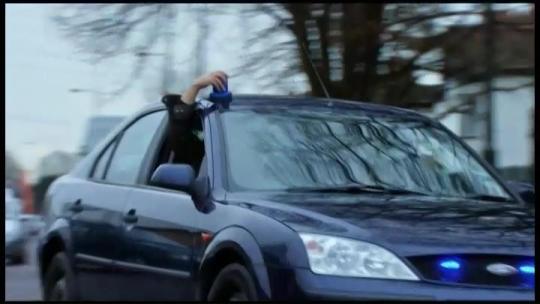
Officer call signs:
Sierra-Oscar 5-2 - Superintendents used this so it was the call sign for Brownlow (and Derek when he was acting Super), Chandler, Okaro, Prosser, Heaton and finally Jack Meadows.
Sierra-Oscar 5-4 was for Chief Inspectors so Derek, Cato and Stritch but the call sign and role was retired at Sun Hill after Derek was killed.
Sierra-Oscar 5-5 was the call sign for DCI's so this is Kim Reid, Frank Burnside and Jack Meadows.
Sierra-Oscar 7-5 was used for Frank Burnside when DI
Sierra-Oscar 3-3 was used for Roy Galloway when DI
Sierra-Oscar 7-0 was used for Neil Manson when DI.
Sierra-Oscar 7-1 was used for Sam Nixon when DI
Need to check on those for Johnson, Wray, Haines and Deakin if required but they can just use rank/surname as described below.
Sierra-Oscar 3-2 was used for DS Geoff Daly
Sierra-Oscar 6-7 was used for DS Don Beech
Sierra-Oscar 2-8 was used for DS John Boulton
Sierra-Oscar 3-6 was used for DC Will Fletcher
Sierra-Oscar 9-8 was used for DC Gary Best
Sierra-Oscar 4-2 was used for DC Grace Dasari.
Sierra-Oscar 3-0 was used for DC Mike Dashwood
Sierra-Oscar 223 was used for DC Rod Skase (in All Change)
Sierra-Oscar 613 was used for DC Duncan Lennox (In All Change)
CID would most often use their rank and surname.
Sierra Oscar 1 was used for all inspectors at the station from Deeping, Kite, Frazer, Monroe, Matt when he was acting Inspector, Gina, Smithy when he was acting inspector, Rachel and then finally Smithy when full inspector. (Smithy was 833 as PC and 54 as Sgt)
SO25 - Rachel Weston
SO30 - Callum Stone
SO33 - Craig Gilmore
SO46 - Jo Masters (after moving from CID to uniform)
SO48 - June Ackland (SO643 when a PC)
SO48 - Diane Noble for one night (she was supposed to return but the ITV cutbacks and the show moving to one episode a week meant her two-parter return was edited down to one episode and new scenes filmed to explain she was transferring to Barton St.)
SO54 - Smithy (833 as a PC and Sierra 1 as an Inspector)
SO54 - Jane Kendall and Tom Penny
SO55 - Ray Steele
SO61 - John Maitland
SO66 - Sheelagh Murphy (SO661 when demoted to PC)
SO79 - Matt Boyden
SO82 - Joseph Corrie
SO87 - Nikki Wright
SO92 - Bob Cryer
SO95 - Stuart Lamont
SO96 - Alec Peters
SO99 - Phil Hunter (during a short punishment stint in uniform)
SO101 - Taffy (Francis Edwards)
SO128 - Lewis Hardy
SO134 - Phil Young
SO139 - Timothy Able
SO140 - Nick Klein
SO148 - Mel Ryder and Yorkie (Tony Smith)
SO149 - Gary Best (Changes so SO 9-8 in CID)
SO158 - Honey Harman
SO171 - Reginald Percival Hollis
SO201 - Dave Litten
SO202 - Kerry Young
SO201 - Pete Muswell
SO212 - Millie Brown
SO217 - Laura Bryant (was SO7667 when a PCSO)
SO218 - George Garfield
SO227 - Viv Martella
SO235 - Roz Clarke
SO249 - Gemma Osbourne
SO251 - Jamila Blake
SO258 - Beth Green
SO275 - Roger Valentine
SO294 - Danesh Patel
SO298 - Yvonne Hemmingway
SO315 - Dan Casper
SO330 - Robin Frank and Ron Smollett
SO335 - Donna Harris
SO340 - Dave Quinnan
SO342 - Abe Lyttleton
SO351 - Malcolm Haynes
SO354 - Arun Ghir
SO355 - Cameron Tait
SO358 - Gary McCann
SO361 - Emma Keane and Vicky Hagen
SO362 - Luke Ashton (for his return post-2002)
SO363 - Steve Loxton, Lance Powell and Kirsty Knight
SO408 - Nick Slater
SO416 - Sam Harker, Ken Melvin and Gabriel Kent
SO432 - Luke Ashton (for his first 97-99 stint) and Des Taviner
SO437 - Leela Kapoor and Leon Taylor
SO452 - Adam Bostock
SO469 - Polly Page
SO483 - Diane Noble (was SO48 for her one-night stint as Sgt)
SO487 - Cathy Marshall and Rosie Fox
SO510 - Billy Rowan (though poor love lasted half a shift)
SO517 - Mike Jarvis
SO518 - Cass Rickman
SO543 - Will Fletcher
SO561 - Debbie Keane
SO570 - Cathy Bradford
SO577 - Barry Stringer
SO595 - Tony Stamp
SO600 - Jim Carver
SO643 - June Ackland (SO48 as Sgt)
SO659 - Suzanne Ford
SO661 - Sheelagh Murphy (SO66 as Sgt)
SO682 - Di Worrell
SO686 - Sally Armstrong
SO740 - Ben Hayward
SO743 - Pete Ramsey
SO759 - Steve Hunter
SO795 - Ben Gayle
SO800 - Richard Turnham
SO832 - Delia French and Claire Brind
SO833 - Smithy (SO54 as Sgt and Sierra 1 when Inspector)
SO876 - Nate Roberts
SO876 - Nick Shaw
SO888 - Amber Johannsen
SO943 - Andrea Dunbar
SO988 - Eddie Santini and Ruby Buxton
FED REPS: Federation Representatives support and advise officers if they've been accused of something or matters like pay, rights, allowances, conduct, equality and development etc. It's often mocked, mostly when Reg is in the position as everyone's favourite busy body, however it is a responsible position and Reg was very good at it if only due to his nitpicking and love of the rule book.
Fed reps: Reg Hollis, Barry Stringer, George Garfield, Nick Klein, Leela Kapoor
The Area Car can only be driven by the officers who are qualified to drive them for example: Roger Valentine, Tony Stamp, Kirsty Knight, Callum Stone, Ben Gayle, Gemma Osbourne, Yvonne Hemmingway, Matt Boyden, Vicky Hagen, Gina Gold, Steve Loxton, Mike Jarvis, Will Fletcher and Des Taviner.
Civillian Staff:
Jonathan Fox - Senior Crown Prosecutor and one time boyfriend of Gina Gold. He left Gina because she wouldn't commit right as she was about to commit to him. She tries to tell him this when he returns during her cancer fight but he's moved on with someone else... she can't handle just being friends so asks him to leave.
Matt Hinkley - Senior Crown Prosecutor
Eddie Olosunje - CSE
Lorna Hart - CSE
Audrey ?? - A CSE who checked Gabriel's clothes and is very friendly with Gina - they play poker together.
Dean McVerry - CAD
Marilyn Chambers - SRO - Reg was about to propose to her and was waiting for her where they had their first date when Colin Fairfax drove his van into the front of the station.
Julian 'JT' Tavell - SRO
Robbie Cryer - SRO (SRO's used to be Front Desk Officers)
DOPA Mia Perry (Press Officer) - Mickey's girlfriend who cheated on him with John Heaton
Margret Barnes - Cleaner who was obsessed with Ramani
Special Constable Terry Knowles (Killed on his first day trying to be like Des)
PCSO Colin Fairfax - Racist who drove a van into the front of the station, killing Ken, Marilyn and Andrea.
PCSO Laura Bryant - Became a full PC.
Marion Layland - Charles Brownlow's long suffering PA.
Rochelle Barrett - Drugs Referral Officer
Tom Kent - FME in the early 90's
Important Reoccurring Characters (Police):
Guy Mannion - Chief Super to Brownlow and then Borough Commander. Pain in the arse.
Trevor Hicks - DAC/Assistant Commissioner
Georgia Hobs - DAC
Roy Pearson - DAC. Neil Manson's father-in-law and user of rent boys. Murdered by one after attempting to retrieve a video that was being used to blackmail him.
Lisa Kennedy - Commander (Her son is involved in an altercation that leads to disaster at a football match)
Jane Fitzwilliam - Borough Commander
Louise Campbell - Borough Commander
Ian Barrett - Borough Commander - tried to blackmail PC Dan Casper into ending his affair with his wife, Rochelle. Ended up getting Dan held at gunpoint and left Sun Hill alongside his wife.
Amanda Prosser - acting Superintendent whilst Adam took time off following the death of his family in an RTA. Upset a bereaved father who then took her hostage at gunpoint and caused a siege at Sun Hill (second live episode)
Rowanne Morell - DI/DCI who came in to investigate a case and then came in as cover for Neil whilst he took some time off after his father-in-law's death/end of his marriage.
Andrew Ross - DCI if I remember rightly he was part of MIT and kept coming over for murders - the Serial Killer/Des's Firebombing/Cathy's murders etc.
Frank Keane - DCI from MIT. Rubbed everyone up the wrong way and thought the sun shone out of his daughter - Emma's - arse.
Karen Lacy - stuck up DI from SO15 who immediately alienated most of Sun Hill after Emma's death by refusing to let her friends in uniform help and would only let them man a cordon and then told Jack that CID could only help if EVERYTHING was run by her and came back to her and her alone.
Tom Baker - TREV which was a fan-coined term that stands for Totally Reliable Extra Veteran'. Tom was an outstanding backup CID member for over a thousand episodes. He's even in the Guinness Book Of World Records for it.
Terry Knowles - Terry was a Special Constable who idolized Des and wanted to be like him. He tried to copy how he'd seen him pick up a woman and flirt at a blonde in a convertible. Unfortunately, it all went wrong when she stabbed him in the neck and severed his jugular and he died, leaving a 2-year-old son fatherless.
Doug Wright - husband of Sgt Nikki Wright. Nikki transferred to Sun Hill when she got fed up with the confusion over two Sgt Wright's and then having to work opposing shifts. He's based at Sun Hill but they cross over to police a football match. Sadly Doug ends up getting stabbed and they realise there's a Cop Killer on the loose after he taunts them and goes on to murder new recruit Billy Rowan on his very first day.
Mark Rollin - Lance Powell's Boyfriend/Fiance/Civil Partner/Husband. Mark is a Sgt in CO19 and keeps his sexuality hidden to avoid the banter and bullying. He goes to pieces after shooting dead Jeff Clarke and he and Lance separate - only for Lance to go out drinking to try to cheer himself up. It ended with Lance being murdered by a gay serial killer pair.
Steve Hodges - an irritating little man who was the Detective Superintendent at CIB at the time that Claire Stanton was undercover trying to get information to prove that Don Beech was corrupt. He expected Claire to pull evidence out of her arse and moaned constantly.
Rachel Kitson - Crime Scene Photographer who murdered old school friend turned Super Model Cindy Statham. She got away with it and someone else was accused and locked up...but then Jo went back and looked at the footage again as she had a niggling feeling. Rachel realised she was on to her and took her hostage at gunpoint. It was Stuart getting suspicious when he received a text calling him 'hun' and realising that something was very wrong that saved her life with seconds to go.
Important Reoccurring Characters (Civilians):
Rod Jessop - June's second husband after Jim. He is a headteacher and a good man who has 2 children of his own. At first, June isn't too sure as she thinks he's a little too keen but she warms to him and they fall in love and take early retirement together.
Irene Radford - Mother of Karl, Wayne and David Radford, a large crime family with a history going back decades with Gina. She takes Gina hostage at one point and she and David are literally seconds from killing Smithy and Kerry at another point!
Louise Larson - Wife of Pete Larson. Unhappily married but settled until she met Smithy. Feisty, sarcastic and full of one-liners, she kept him on his toes and they wanted to leave after she agreed to give evidence (Pete was arrested after almost murdering Smithy. I'm sensing a theme here).
Abi Nixon - The cause of Sam shrieking "MY DAUGHTER!!!!!" Had a fling with Matt Boyden - as you do. Then ended up pregnant and engaged to Hugh Wallis - a profiler - who manipulated Abi into it as revenge. He forced Sam to think her daughter was a victim of the Serial Killer. She keeps the baby and her relationship with her mother improves.
Cindy Hunter - Phil Hunter's wife who sees all he does on the side and - usually forgives him, even when a major criminal demands he be allowed to sleep with Cindy. Gregory doesn't force her to sleep with him but does take degrading pictures of her to wind Phil up. She still forgives him... but she can't get past finding out he has a daughter with another major criminal's wife when they are trying for a baby of their own and they finally split.
Jenny Delaney - The girlfriend of George Garfield at first, Jenny is the nurse who looks after Dave Quinnan when he is attacked and left for dead in a youth club. She and Dave fall in love and have an affair which ends up in George leaving Sun Hill. They marry but do not get their happily ever after as Dave and Polly grow closer... and closer...
Kristen Shaw - Drug dealer who Zain goes undercover to catch and he ends up falling for her. She accidentally murders Honey by shooting her when the gun goes off in a struggle (Honey was trying to get Zain to do the right thing and arrest her with him). Zain reluctantly puts Honey's body in the water and they try to escape but in the end, he can't go through with it and refuses to get on the boat with her to escape. He removed the bullets from her gun and so both ended up arrested.
James Tennant - The father of Amy Tennant. This storyline goes on forever for over a year and Neil and James get close and become good friends through it before Amy is found.
Scott Burnett - Scott is the husband of a woman who is found murdered. At first his best friend is charged with it and as his FLO, Honey helps support him through it. They fall in love and in a whirlwind romance they get married.... only for Honey to realise that Scott actually murdered his first wife!
Laura Meadows - Jack's long-suffering wife of almost 30 years who put up with a lot, including affairs. It comes to a head when Jack - in full midlife crisis mode - thinks he's in love with Debbie McAllister and wants to support her and her new baby. Debbie thinks of him mostly as a father figure and is horrified when he finally puts the moves on.
Lilian Rickman - Cass' mum is devastated when her daughter is killed by the Sun Hill Serial Killer. She travels down and bonds with the team and later invites them to the funeral in Liverpool which some travel up to and then have to go straight on shift once they get back to London. She later returns to tie up the sale of Cass' flat and she and Tony grow closer and end up sleeping together.
Marie Graham/Carver - The bereaved mother whose daughter killed herself after being accused of sleeping with underage students. She's an alcoholic who seemed to understand Jim and all his problems... and then started to abuse him 2 days after their marriage. (he should have known it was a bad omen when he and June almost kissed the day of the wedding when trapped with Polly and Tony!)He is accused of abusing her before he ends up in the hospital (Gabriel hit him over the back of the head with a vodka bottle - long story) and he cracks under accusations and shows his many wounds. He leaves Marie and goes on to recover and get back together with June... only for Marie to turn up on THEIR wedding day and cause a scene at the reception and then fall down the stairs and knock herself out. Jim, with a sprained ankle, ends up going into hospital too!
Pauline Smith - Smithy's mum seen in Killer On The Run. His father was an abusive drunk who used to knock her and Smithy around until Smithy was old enough to go out with his friends. Smithy has little to do with his unnamed father and next to no contact. Pauline adores her son and is very proud of him. They are close and Smithy has a key to her house. He also had an unnamed little brother as a PC (mentioned in Soft Talking) but this seemed forgotten when he returned as a Sgt.
More family/love connections can be found here.
#the bill#alex walkinshaw#dale smith#smithy#roberta taylor#gina gold#smiffina#sam callis#callum stone#john boulton#russell boulter#jim carver#mark wingett#don beech#billy murray#leon taylor#dominic power#june ackland#trudie goodwin#chris jarvis#dan casper#will fletcher#gary lucy#mickey webb#chris simmons#kirsty knight#sarah manners#bruce byron#terry perkins#christopher fox
9 notes
·
View notes
Text
13.7 A Policeman’s Lot










One of Bryce Byron’s many guest appearances prior to becoming Terry Perkins and Vicky Entwistle in a small role as well.
#the bill#andrew monroe#debbie keane#tony stamp#vicky entwistle#george garfield#terry perkins#jamila blake#the bill: episode: a policeman's lot#the bill: series 13#the bill: 1997
3 notes
·
View notes
Text

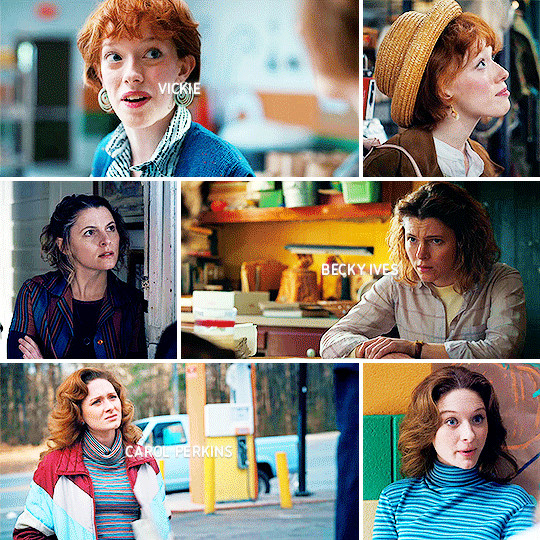

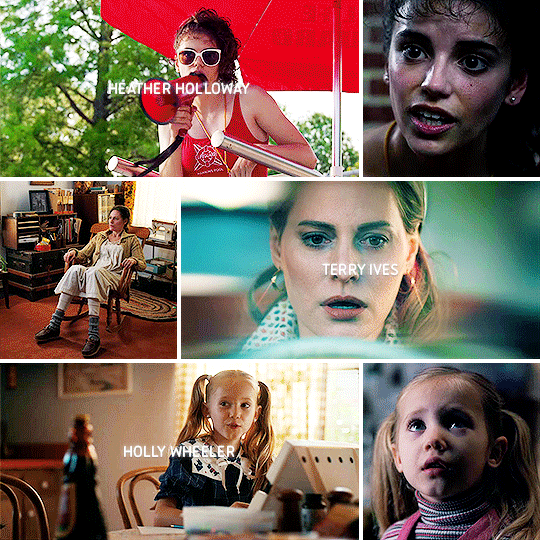
STRANGER THINGS LADIES APPRECIATION WEEK: DAY 7 FREE THEME
Minor characters are brief flickers of light that quickly go extinguished, but shine very brightly when they’re on screen.
#dailystrangerthings#strangerthingsedits#femalescharacters#stladies#stladiesweek#strangerthingsedit#tuserrae#sue sinclair#barb holland#barbara holland#florence#vickie stranger things#becky ives#terry ives#carol perkins#chrissy cunningham#kali prasad#claudia henderson#heather holloway#holly wheeler#i rly tried to do something for each lady for this week (i will get you with an extra set nancy i promise)#and i rewatched s1 and 2 and these women in particular who serve as such an enhancement to the world#just Get Me#*mine#*gifs#*stladiesweek
601 notes
·
View notes
Text
2024 Reading - October
I didn't set out to read quite so many eerie books this month, but about halfway through the month I gave up and leaned into the theme, partly because I was struggling to really focus on anything--as evidenced by the volume of books read via audio.
Total books: 11 | New reads: 11 | 2024 TBR completed: 4 (0 DNF) / 33/36 total | 2024 Reading Goal: 74/100
September | November
potential reading list from October 1st
#1 - The Republic of Pirates : Being the True and Surprising Story of the Caribbean Pirates and the Man Who Brought Them Down by Colin Woodard - 3/5 stars ('24 TBR, audio)
Well-organized as a historical account of a specific time period, and full of detail--perhaps too full at times. The author opens with the intention of focusing on three pirates (Blackbeard, Black Sam Bellamy, and a third whose name I've honestly forgotten) and one man opposed to them (Woodes Rogers). However, the sheer volume of names, dates, historical accounts, and side characters overwhelms any more focused narrative. Woodes Rogers hardly seemed to feature in most of the story, and where he was present, he didn't seem that important to proceedings. Blackbeard and Bellamy both have their time in the spotlight, but then it's back to the jumble with them.
As a sweeping look at the golden age of piracy and even everyday life in the early 18th century in much of the world, it's a decent account (and this is what I went into it seeking). If you want a biography of a specific pirate like Blackbeard or Black Sam or that other guy, or even of Woodes Rogers, it falls somewhat flat.
Note: Probably this would have been easier to follow in printed form; while the narrator for the audiobook is great, there're just so. many. lists. Names, dates, ships, cargoes, places, meetings.... So many.
#2 - Manners and Monsters by Tilly Wallace - 2/5 stars (audio)
This book has three things going for it: 1) Zombies and other supernatural creatures in Regency London; 2) Decent historical accuracy in Regency London; 3) Good pacing.
The negatives are largely rooted in the fact that this book probably thinks it has an enemies-to-lovers arc. It does not. What it has on one side is Wycliff, a whiny, self-important womanizer who is made out as brooding and damaged and only in need of the right woman to tame him. On the other hand, it has Hannah, a woman who is reasonably put off by Wycliff's attitude and lack of basic civility. They only manage to reconcile because she's desperate for male attention (tell me again how poor and plain and unloved you are, please, it's been a whole chapter since the last time) and he decides she's the only woman he's ever met who isn't shallow and prattling and unworthy of his respect as a gentleman.
This is not to say Hannah is blameless. Apart from her fixation on her status as an unmarriageable 22-year-old with good connections, she's just annoyingly inconsistent. One minute she's a wallflower who's just happy to be useful and the next she's the cleverest girl in all of London and no one can touch her.
And then there's the writing, wherein the readers are treated like idiots who can't put together a 10-piece puzzle of a picture of farm animals. All character reasoning was spelled out, all breaks in the murder investigation repeated ad nauseam so we didn't miss them. And any time marriage or men were mentioned, we were reminded that Hannah was going to die alone and unloved, but she was making the best of it. The final reveal about the murderer was the only real twist, and I'd argue that the narration had previously suggested the answer was practically impossible.
Read North and South for a better handling of whatever character dynamic this book tried to present. Read Pride and Prejudice and Zombies if you're here for the supernatural elements in Regency England. Don't read this book.
#3 - The Age of Innocence by Edith Wharton - 4/5 stars ('24 TBR, audio)
Wharton's writing is breathtaking. The story itself, exploring the intricacies of high society is 1870's New York, was fascinating. No sympathy for Archer from me, naturally, but I still enjoyed the story as a whole.
#4 - Small Spaces by Katherine Arden - 4/5 stars ('24 TBR, audio)
Ooooo, this was much spookier than I was expected. I don't remember the last MG horror story that had me quietly stressing out like this. (I recommended it to Kenzie before I'd even finished.)
The narrator left much to be desired. Would not recommend the audiobook.
#5 - The Turn of the Screw by Henry James - 5/5 stars (audio)
Ahahahahaha what.
More like this: "Jane Eyre" and (probably; I don't remember it) "Wuthering Heights"; also the beginning (like the first half) reminded me, weirdly, of The Incorrigible Children of Ashton Place. That...did not last.
#6 - The Light Princess by George MacDonald - 3/5 stars (audio)
When I added this short story to my list, I thought it was going to be an extended version of the fairy tale "Little Daylight" that was in At the Back of the North Wind. It's not, but it was still a solid fairy tale I could see myself reading to my nieces when they're older.
#7 - The Yellow Wallpaper by Charlotte Perkins Gilman - 4/5 stars ('24 TBR)
So short I feel funny counting it but here we are.
And it's just as creepy as I was expecting.
#8 - The Stone Road by Trent Jamieson - 4/5 stars (audio)
This was gorgeous. Yes, it was helped by the Aussie narrator, but the story itself--the slow and vivid unveiling of their world, the dangers that abound, the quest to conquer those dangers, even the sorrow--was an absolute treat. It's a post-apocalyptic horror driven by hope! So, so easy to fall into. Perfect pacing and a fantastic narrative voice. I was not expecting to love this one like I did. The only reason it doesn't get five stars is because the characterization was a bit odd and felt inconsistent at places, especially with side characters; and a character was introduced very close to the end who didn't seem to serve any purpose at all.
There's also a related novel, actually released several years before The Stone Road, that features the aforementioned character who turns up near the end of this book. I gotta see if I can find a copy.
(Note: Some reviews say this is difficult to read on account of...creative grammatical choices, suggesting it needed polishing. I cannot confirm this.)
More like this: it felt like a blend of "Sabriel" and the Tiffany Aching series of Discworld novels, with a young student learning their dangerous and vital trade at the feet of a respected master. There's something like the inherited necromancy of Sabriel and something like the rich, marrow-deep instinctive magic of Tiffany. Jean isn't exactly like Tiffany or Sabriel in personality, though she is clever and stubborn. It also feels a little like the earlier Earthsea novels, that feeling of watching the legend of a great hero unfold.
#9 - Zero G by Dan Wells - 4/5 stars (audio)
I picked up this audiobook during a promotion on Audible years and years ago and remembered it recently while browsing for something to listen to. A little over 4 hours, MG in space, and a "Z" title? Why not?
Reviews say this is "Home Alone in space". Having never seen "Home Alone", I'll have to take their word for it. It was surprisingly fun either way, with a good balance of sci-fi, danger, and comedy. Definitely something I'd recommend to kids in the right audience age range.
More like this: It felt a bit like "The Last Cuentista" but leaning into the levity more than the horror that surrounds "Cuentista".
#10 - Witches Abroad by Terry Pratchett - 4/5 stars
Good as ever. Granny's a Top Five Discworld character for me, and I love her dynamic with Nanny and Magrat.
And Greebo.
#11 - The Haunting of Hill House by Shirley Jackson (audio) - 5/5 stars
Predictably chilling. I loved the build-up. We know the house is haunted. We know it is dangerous. But it's still terrifying.
DNF:
The Zombie Survival Guide: Complete Protection from the Living Dead by Max Brooks - Fun concept but bland delivery. I was hoping for a smidge of a narrative throughline.
Zeroboxer by Fonda Lee - Admittedly a desperate attempt to get that "Z" title. Had potential until the MC's hormones took the wheel halfway through.
The Sisters of Straygarden Place by Haley Chewins - Fluffy writing full of weird metaphors and similes for every description. It bogged down the pacing big time.
Blindsight by Peter Watts - Picked a book at random from my TBR to listen to, got 15% of the way in, and decided I had no idea what was happening and no interest in continuing. Possibly this would have been easier to follow in print form? Confusing all around. Also very weird about autism.
The Lighthouse at the End of the World by Jules Verne, translated by William Butcher - I've read and enjoyed other works by Verne, but this one was an absolute slog. Not sure if it's down to the translation or the fact that the story was edited and published posthumously. I will say the edition I picked up would be a treat for someone wanting to come at this from more of a research angle. There are extensive notes about translation choices, notes Verne left in his manuscript, and a lot of "Verne said this in the text, but in the real world this makes absolutely no sense", which was lots of fun. (Note: This was my 40th DNF of the year....)
Currently Reading:
Lords and Ladies by Terry Pratchett - I'm about two-thirds of the way through this one. I tried so hard to finish it by the end of the month but didn't quite manage it.
Etiquette and Espionage by Gail Carriger - Just started this one and I'm loving it so far!
#mine#2024 reading list#The Republic of Pirates#Colin Woodard#Manners and Monsters#Tilly Wallace#The Age of Innocence#Edith Wharton#Small Spaces#Katherine Arden#The Turn of the Screw#Henry James#The Light Princess#George MacDonald#The Yellow Wallpaper#Charlotte Perkins Gilman#The Stone Road#Trent Jamieson#Zero G#Dan Wells#Witches Abroad#Terry Pratchett#The Haunting of Hill House#Shirley Jackson
10 notes
·
View notes
Text

Movie #30 of 2024: Hawk the Slayer
The story is ludicrous but editor Eric Boyd-Perkins bends time, warps flat performances (Jack Palance being the exception of course), motivates the use of heavy fishnet over lens diffused lighting, and composites charmingly practical vfx to lift this 1980 fantasy film to sublime levels of cinema you might not expect.
#hawk the slayer#terry marcel#adventure#fantasy#harry robertson#Paul Beeson#Eric Boyd-Perkins#english#35mm#1980#30
13 notes
·
View notes
Text
In 1930, the time traveling alien known as the Doctor (Doctor 10) and his companion Martha arrived in New York City, America where they discovered the Cult of Skaro was attempting to make a Dalek/human hybrid. ("Daleks in Manhattan/Evolution of the Daleks", Doctor Who vlm 3, TV)

#nerds yearbook#sci fi tv#1930#bbc#doctor who#dw#helen raynor#terry nation#daleks#james strong#doctor 10#10th doctor#david tennant#freema agyeman#martha jones#andrew garfield#new york#nyc#empire state building#hugh quarshie#miranda raison#ryan carnes#tardis#eric loren#flik swan#alexis caley#earl r perkins#peter brooke#ian porter#joe montana
16 notes
·
View notes
Text
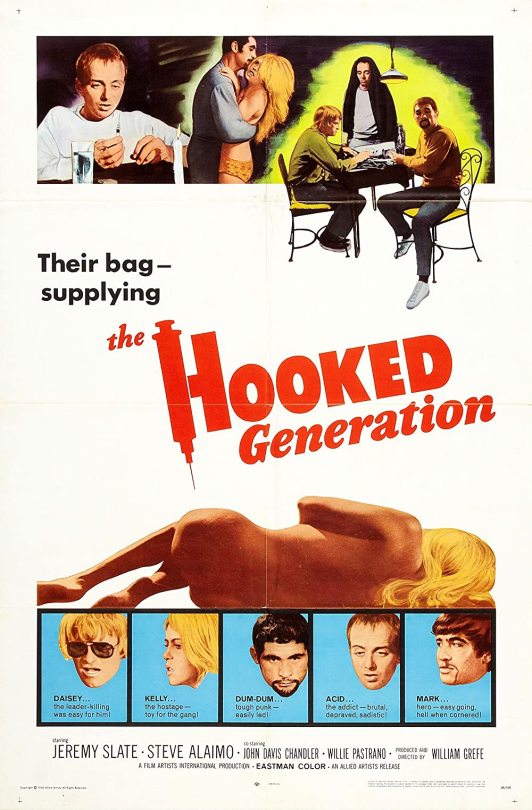
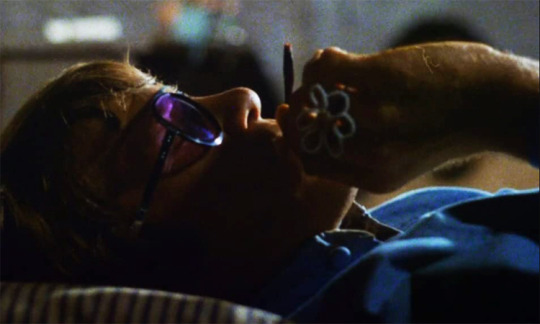
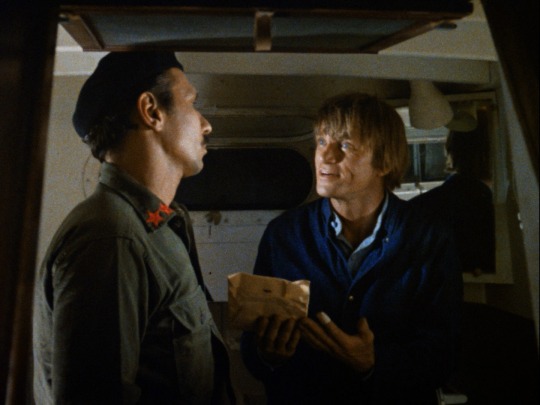







The Hooked Generation (1968)
"Man, you cats are hot! You're hot, baby!"
"What are you talking about, we're hot?"
"You knocked off the Coast Guard men, right? Right? Right? Am I putting you on so far?"
#the hooked generation#william grefé#1968#exploitation film#american cinema#quinn morrison#ray preston#jeremy slate#steve alaimo#john davis chandler#willie pastrano#cece stone#walter r. philbin#socrates ballis#milton 'butterball' smith#lee warren#gay perkins#marilyn nordman#terry smith#chris martell#Bill Grefé‚ in many ways the Florida Man of indie filmmaking‚ turns his attention away from spooky ghouls and sci fi monsters toward a more#real social horror; that's right baby‚ it's drugsploitation time! benefiting from a slightly better cast than his previous pictures (ie.#some of them can act) and having developed his skills a little (a LITTLE) this is maybe on the whole a slightly better film than Sting of#Death or Tartu was... but with the increased finesse comes a decrease in charm‚ and without a jellyfish headed man monster or an everglades#murder ghost to enjoy‚ we're instead left with a gang of murderous drug dealers as they try to sell their villainous dope whilst also#killing pretty much everyone they come across. perhaps my lesser enjoyment is on me; the genre isnt one im particularly enamoured of and#tbh if I'm gonna sink time into watching objectively bad films (and like. i probably just shouldn't do that) but if i do‚ they should at#least have a Creature for me to enjoy. no creature here‚ just the heavy handed spectre of generational divide and societal failings#some trippy trip scenes in the back half are kind of cool and milton smith is a lot of fun but otherwise this is a little ehhh
13 notes
·
View notes
Text

0 notes
Text


Why Marx Was Right by Terry Eagleton
The Outlaws: Series 3 Episode 2
0 notes
Text
Gay Life Stories

These are my posts covering the life stories of some gay and bisexual men. This list will be updated continuously.
Benson brothers
Beverley Nichols & the Bensons
Robert Murray Gilchrist
J. Warren Kerrigan
Siegfried Sassoon & Wilfred Owen (Lit Hub article)
Siegfried Sassoon & Robert Graves (Strange Meetings excerpt)
Jean Cocteau & Jean Marais (Far Out article)
Ramon Novarro
William Haines
Tennessee Williams & Frank Merlo (LOC article)
George Walton & Reg Mickisch
Jack Ilfrey
Gilbert Bradley & Gordon Bowsher (BBC article)
Rock Hudson & George Nader
Charles Nolte & Terry Kilburn
Tom Tryon
James Ivory & Ismail Merchant
George Maharis
Anthony Perkins (book excerpt)
Jack Baker & Michael McConnell
Ensan Case
Related: General history posts
30 notes
·
View notes
Text

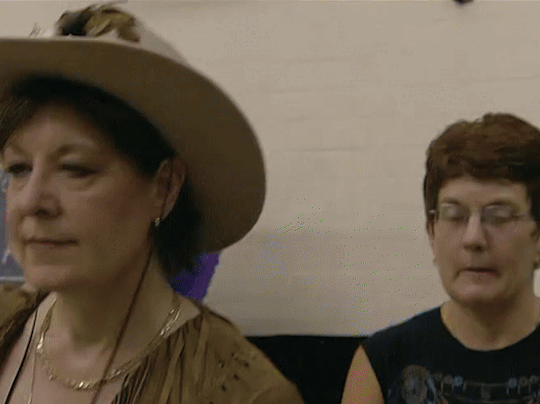


Gina and Terry - you heard it here first 😂😉
#OH MY GOD#THEIR SHIP NAME WOULD BE TINA GERKINS#I LOVE IT#gina gold#roberta taylor#terry perkins#bruce byron#the bill
6 notes
·
View notes
Text
11.119 Mugs

Bruce Byron (Terry Perkins) in a second guest role.
2 notes
·
View notes
Text
Welcome to Letters2fiction!
The concept here is to send in a question or a letter request, and you’ll get a response from your fictional character of choice, from the list below. Please stick to the list I’ve made, but of course, you can ask if there’s some other characters I write for, I don’t always remember all the shows, movies or books I’ve consumed over the years and I’m sure I’m missing a lot 😅
Status: New Characters added - Thursday March 21st, 2024
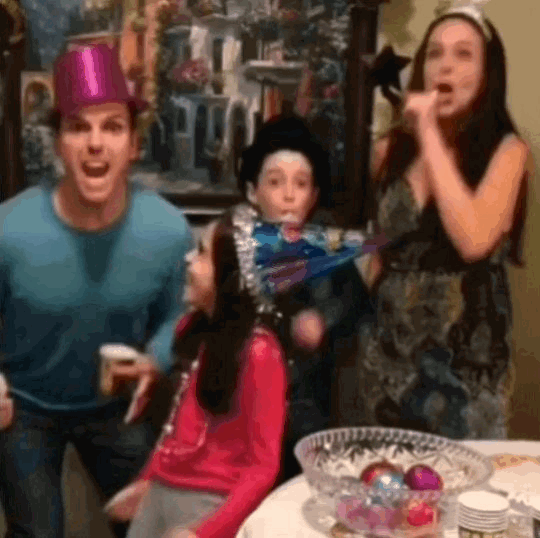
TV SERIES
A Discovery of Witches:
Matthew Clairmont
Baldwin Montclair
Gallowglass de Clermont
Marcus Whitmore
Philippe de Clermont
Jack Blackfriars
Sarah Bishop
Emily Mather
Diana Bishop
Ysabeau de Clermont
Miriam Shepard
Phoebe Taylor
Gerbert D’Aurillac
Peter Knox
Father Andrew Hubbard
Benjamin Fuchs
Satu Järvinen
Meridiana
Law and Order:
Rafael Barba
Sonny Carisi
Joe Velasco
Mike Duarte
Terry Bruno
Peter Stone
Hasim Khaldun
Nick Amaro NEW!
Mike Dodds
Grace Muncy
Kat Tamin
Toni Churlish
Amanda Rollins
Olivia Benson
Rita Calhoun
Casey Novak
Melinda Warner
George Huang
Sam Maroun
Nolan Price
Jamie Whelan
Bobby Reyes
Jet Slootmaekers
Ayanna Bell
Jack McCoy
Elliot Stabler
One Chicago:
Jay Halstead (Could also be Will if you want)
Antonio Dawson
Adam Ruzek
Greg "Mouse" Gerwitz
Dante Torres
Vanessa Rojas
Kevin Atwater
Sean Roman
Matt Casey
Kelly Severide
Joe Cruz
Sylvie Brett
Blake Gallo
Christopher Hermann
"Mouch"
Otis
Violet Mikami
Evan Hawkins
Mayans MC:
Angel Reyes
Miguel
Bishop
Coco
Nestor
911 verse:
Athena Grant
Bobby Nash
Henrietta "Hen" Wilson
Evan "Buck" Buckley
Eddie Diaz
Howie "Chimney" Han
Ravi Panikkar
T.K. Strand
Owen Strand
Carlos Reyes
Marjan Marwani
Paul Strickland
Tommy Vega
Judson "Judd" Ryder
Grace Ryder
Nancy Gillian
Mateo Chavez
The Rookie:
Lucy Chen
Tim Bradford
Celina Juarez
Aaron Thorsen
Nyla Harper
Angela Lopez
Wesley Evers
BBC Sherlock:
Greg Lestrade
Mycroft Holmes
Sherlock Holmes
Moriarty
Molly
Bridgerton:
Anthony Bridgerton
Benedict Bridgerton
Simon Basset
Daphne Bridgerton
Eloise Bridgerton
Kate Sharma
Edwina Sharma
Marina Thompson/Crane
Outlander:
Jamie Fraser
Claire Beauchamp Randall Fraser
Frank Randall
Black Jack Randall
Brianna Fraser
Roger MacKenzie
Fergus Fraser
Marsali Fraser
Jenny Fraser Murray
Ian Murray Sr.
Ian Fraser Murray
Murtagh Mackenzie
Call The Midwife:
Shelagh Turner / Sister Bernadette
Dr. Patrick Turner
Nurse Trixie Franklin
Nurse Phyllis Crane
Lucille Anderson
Nurse Barbara Gilbert
Chummy
Sister Hilda
Miss Higgins
PC Peter Noakes
Reverend Tom Hereward NEW!
Narcos:
Horacio Carrillo
Peaky Blinders:
Tommy Shelby
Downton Abbey:
Robert Crawley, Earl of Grantham
Cora Crawley, Countess of Grantham
Lady Mary Crawley
Lady Edith Crawley
Lady Sybil Crawley
Violet Crawley, Dowager Countess of Grantham
Isobel Crawley
Matthew Crawley
Lady Rose MacClare
Lady Rosamund Painswick
Henry Talbot
Tom Branson
Mr. Charles Carson
Mrs. Hughes / Elsie May Carson
John Bates
Anna Bates
Daisy Mason
Thomas Barrow
Joseph Molesley
Land Girl:
Connie Carter
Reverend Henry Jameson (Gwilym Lee's version)
Midsomer Murder:
DCI Tom Barnaby
Joyce Barnaby
Dr. George Bullard
DCI John Barnaby
Sarah Barnaby
DS Ben Jones
DS Jamie Winter
Sgt. Gavin Troy
Fleur Perkins
WPC Gail Stephens
Kate Wilding
DS Charlie Nelson
Sergeant Dan Scott
NEW! Once Upon A Time
Regina / The Evil Queen
Mary Margaret Blanchard / Snow White
David Nolan / Prince Charming
Emma Swan
Killian Jones / Captain Hook
Mr. Gold / Rumplestiltskin
Neal Cassidy / Baelfire
Peter Pan
Sheriff Graham Humbert / The Huntsman
Jefferson / The Mad Hatter
Belle
Robin of Locksley / Robin Hood
Will Scarlet
Zelena / Wicked Witch
Alice (Once in Wonderland)
Cyrus (Once in Wonderland)
Jafar (Once in Wonderland)
Gideon
Tiger Lily
Naveen
Tiana
Granny
Ariel
Prince Eric
Aladdin
Jasmine
Dr. Jekyll and Mr. Hyde
Hercules
Megara
Tinker Bell
Merida
Red Riding Hood
Mulan
Aurora / Sleeping Beauty
Prince Phillip
Cinderella
Prince Thomas
NEW! The Vampire Diaries / The Originals
Stefan Salvatore
Damon Salvatore
Caroline Forbes
Elena Gilbert
Bonnie Bennett
Enzo St. John
Niklaus Mikaelson
Elijah Mikaelson
Kol Mikaelson
Rebekah Mikaelson
Freya Mikaelson
Finn Mikaelson
Mikael
Esther
Marcel Gerard
Davina Claire
MOVIES
The Pirates of the Caribbean:
Captain Jack Sparrow
Barbossa
Will Turner
Elizabeth Swann
James Norrington
Kingsman:
Merlin
Harry Hart
Eggsy Unwin
James Spencer / Lancelot
Alastair / Percival
Roxy Morton / Lancelot
Maximillian Morton / The Shepherd
Orlando Oxford
Jack Daniels / Whiskey
Gin
BOOKS
Dreamland Billionaire series - Lauren Asher:
Declan
Callahan
Rowan
Iris
Alana
Zahra
Dirty Air series - Lauren Asher:
Noah
Liam
Jax
Santiago
Maya
Sophie
Elena
Chloe
Ladies in Stem - Ali Hazelwood books:
Olive
Adam
Bee
Levi
Elsie
Jack
Mara
Liam
Sadie
Erik
Hannah
Ian
Fourth Wing - Rebecca Yarros:
Xaden Riorson
Dain Aetos
Jack Barlowe
Rhiannan Matthias
Violet Sorrengail
Mira Sorrengail
Lillith Sorrengail
Bodhi Durran
Liam Mairi
#a discovery of witches#law and order svu#law and order#law and order oc#chicago pd#chicago fire#mayans mc#911 abc#911 lone star#the rookie#bbc sherlock#sherlock#bridgerton#outlander#call the midwife#narcos#downton abbey#peaky blinders#land girls#midsomer murders#once upon a time#the vampire diaries#the originals#the pirates of the caribbean#kingsman#dreamland billionaires#dirty air series#love hypothesis#love theoretically#loathe to love you
44 notes
·
View notes
Text
Happy end of January! here are all the books I read this month
Black AF History: The Un-Whitewashed Story of America by Michael Harriot.
Exactly what it says on the tin! Very good pop history book, tremendously well researched; actually very funny. I HIGHKEY recommend the audiobook if you can get it. Favourite book of 2024 so far.
Benjamin January mysteries by Barbara Hambly. I've read three of them this month because they're excellent. (A Free Man of Color, Fever Season, Graveyard Dust.)
Historical fiction + murder mystery set in 1830s New Orleans, and I love the atmosphere as much as I do the characters. You know those books where the city is its own character? THAT. Excellent vibes, very thoughtfully researched, and the character dynamics are excellent. (CW for period typical racism all over the place as the main character is a dark-skinned Black man in 1830s New Orleans; no gratuitous edginess)
Children of Time by Adrian Tchaikovsky
THIS BOOK HAS SPIDERS IN IT. Just putting it out there because I very much missed it, and the spiders are a big deal. Scific, space opera. 10/10 would rec unless you're violently arachnophobic, then proceed with caution.
Don't Fear the Reaper by Stephen Graham Jones
Second book of the Indian Lake Witch trilogy. Unfortunately not as cool as the first but I'm hype for the third book coming out! If you like poetically described gore, and badass horror ladies, read the first book first. This one isn't quite on that level but there IS death and destruction <3
Four Thousand Weeks: Time Management for Mortals by Oliver Burkeman
I can't believe I 1) finished a self-help book and 2) I'm really out here recommending it to people, but I really found it useful. Will wonders ever cease?
Nineteen Claws and a Black Bird by Agustina Bazterrica
Horror short stories collection. A couple were bangers, a few were absolute duds.
Take My Hand by Dolen Perkins-Valdez
Do yourself a favour and don't read this. Allegedly historical fiction; in practice, the "fiction" part is extremely dull and the book doesn't have anything going for it except the ripped-from-the-headline case of the Relf sister. The cover is pretty, I guess.
Unwell Women: Misdiagnosis and Myth in a Man-Made World by Elinor Cleghorn
Tremendous read. Medical misogyny through the ages, with an eye to intersectionality; I have some nitpicks about the tone of the writing but I'm still going to recommend it to everyone. (link goes to my GR & we should be friends)
Vendetta ai Mondiali by Paolo Foschi
This is a prize for a few elects (Italian speakers). Italian sports-themed detective novel except the grizzly detective is gay... I feel like this was written for ME personally.
The Wee Free Men by Terry Pratchett
Unfortunately, I'm running out of new-to-me Discworld novels! This made me very happy but also very emo.
26 notes
·
View notes
Text
made a post about this on my twitter but i wanna post it on here too: ik everyone loves to point out just how "pathetic" art is and how he's so down bad for tashi but in the same breath, make patrick out to be this manwhore who's a flirt and objectifies women. the latter isn't necessarily false-- in fact it's true. but to paint art as someone who respects tashi and has done nothing wrong is just missing the point.
in 1915, charlotte perkins gilman published the novel herland which is about this utopian society where only women exist and they defy the patriarchal ideals. in this novel, three men see it for themselves and gilman uses these three men to show how men irl view women. the one named van is irrelevant to this post but there's terry: he is this loud, sexist, unashamed flirt, who objectifies women and even commits acts of sexual violence. patrick can be associated with this (less so however). he outwardly objectifies tashi ("i want her to fuck me with that racket") and is aggressive in his flirting.
there's the third character named jeff. jeff seems harmless at first. he's chivalrous and doesn't say mean things about women-- but he puts them on pedestals. gilman utilizes this character to make a critique about "the nice guy" and how putting women on pedestals is still treating them as this inhuman idea-- which is still objectifying and demeaning, even sexist, but it's so sly and because it's not outward objectifying, we don't see it as such. this, i feel, can be compared to art. we see, in response to patrick's objectifying flirting, he disagrees and says she's a "talented young woman".
but despite this, we see him trying to get to tashi. he says to patrick that "she doesn't love you" and says to tashi "i don't think he loves you" and both of them see through it but the fact is, he tried to pursue her even though she was unavailable. he still wanted her despite the fact it was not reciprocated (at the time). he's only made out with tashi yet he still tries to pursue her, even though that's his best friend's girlfriend! that's breaking bro code! it's mean! not just to patrick but to tashi who he doesn't see as fully human who's capable of picking which man she wants to date. he still sees tashi as someone who deserves to be with him and not his best friend. it's objectifying and dehumanizing. to treat tashi, a black woman, as not capable to make her own decisions is problematic!
his manipulation (which a lot of people who are team art (whatever that means) love to deny) is outwardly said in the film. it's driven by this objectification he has of tashi and we even see the physical representation of it during the scene in the bedroom when she sits on the bed, her posture is tall, and he's laying on the bed, kissing her hand. the blocking for that was insane but it shows exactly how patrick views tashi.
yes funny haha pathetic men but to portray patrick as the sexist man and art as the only one of the two to treat tashi with respect is just flat out wrong lmao. putting women on pedestals is still objectifying. still trying to pursue women even though they're unavailable (and have said nothing about wanting you) is still objectifying.
tldr; art still objectifies tashi, he's just "nice" about it
#i hope nobody takes this the wrong way#i'm not trying to say art sucks and nobody should like him#i just want people to stop acting like hes an angel and patrick is the devil#bc if i was patrick and i hear my gf got hurt and i go in and find her and my bff#together and she says go and i don't bc i worry about her#but then my bff yells at me to 'get the fuck out'....#i'd be pissed!!!!#anyways zendaya was right about art#challengers#zendaya#mike faist#josh o'connor#ashla.txt
12 notes
·
View notes
Text
Hermione Granger: An Inspired Reading Recommendations List
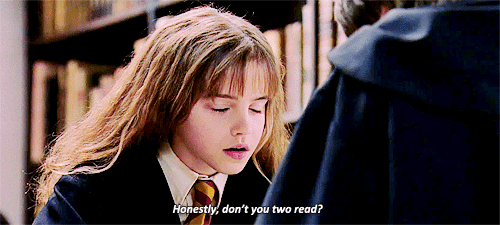
Matilda by Roald Dahl
Hidden Figures by Margot Lee Shetterly
Fantastic Beasts and Where to Find Them by J.K. Rowling
To Kill A Mockingbird by Harper Lee
The Handmaid's Tale by Margaret Atwood
Pride and Prejudice by Jane Austen
Sapiens: A Brief History of Humankind by Yuval Noah Harari
Macbeth by William Shakespeare
The Crucible by Arthur Miller
Women in Science: 50 Fearless Pioneers Who Changed the World by Rachel Ignotofsky
The Tales Of Beedle The Bard by J.K. Rowling
A Short History Of Nearly Everything by Bill Bryson
Good Omens by Neil Gaiman and Terry Pratchett
The Book Thief by Markus Susak
We Should All Be Feminists by Chimamanda Ngozi Adichie
The Eyre Affair by Jasper Fforde
Anne Of Green Gables by L.M. Montgomery
The Hate U Give by Angie Thomas
The Yellow Wallpaper by Charlotte Perkins Gilman
Recitatif by Toni Morrison
Jane Eyre by Charlotte Brontë
Practical Magic by Alice Hoffman
The Wee Free Men by Terry Pratchett
#hermione granger#books#book blog#booklr#readblr#book reccs#book recommendations#bookaddict#bookblr#bookworm#book rec list#hermione granger reads#hermione granger books#hermione granger book list#harry potter#hp#witches#social justice#social justice books#witchy books#hermione#books and reading
36 notes
·
View notes